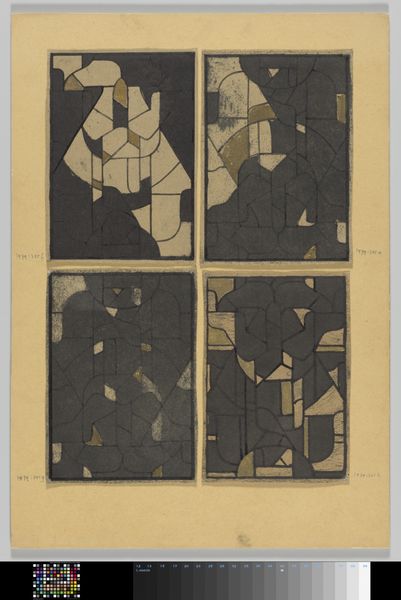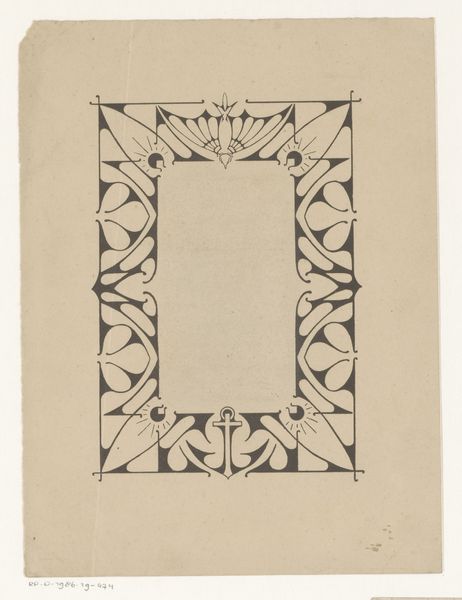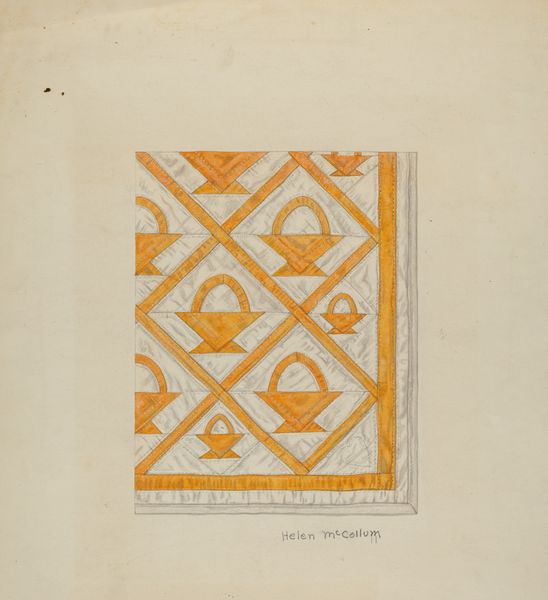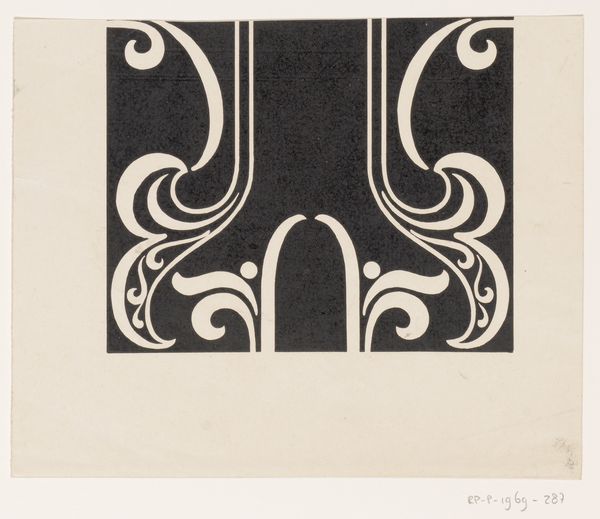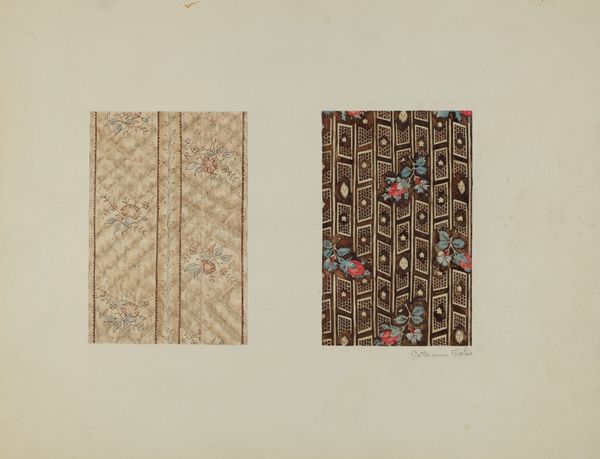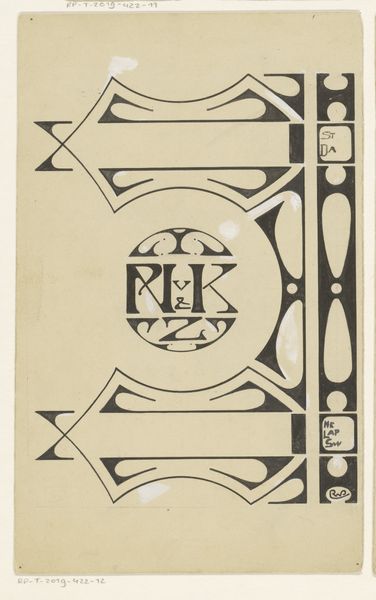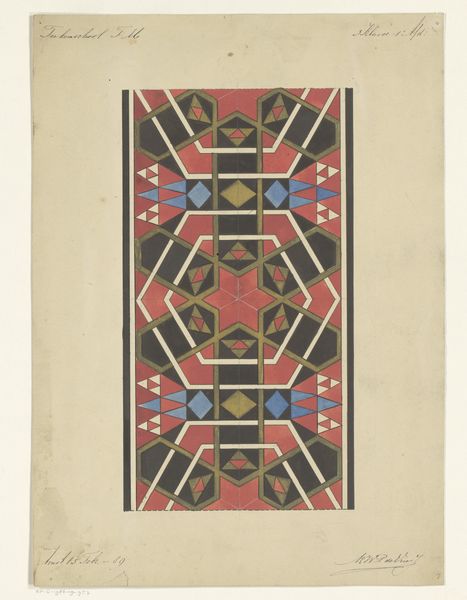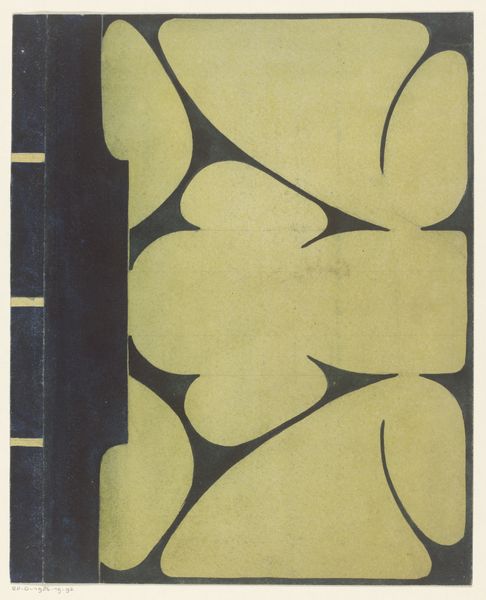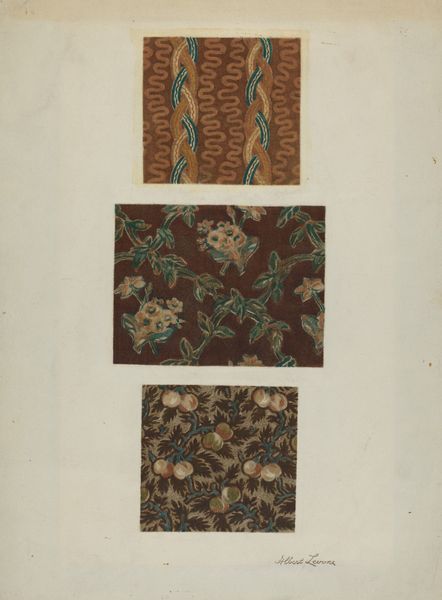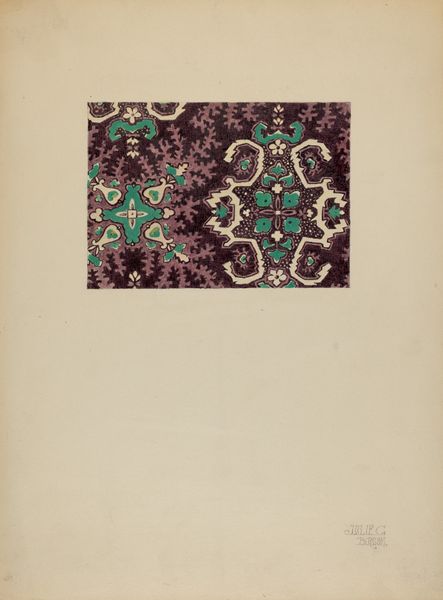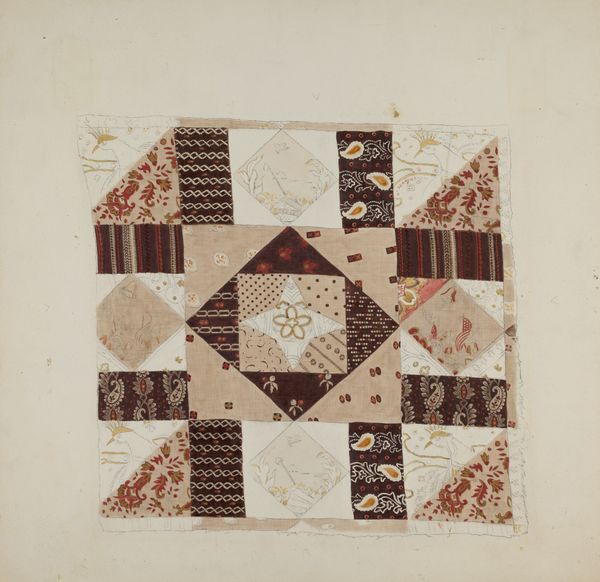
Dimensions: overall: 50.8 x 38.1 cm (20 x 15 in.) Original IAD Object: 4 1/2" high; 2 7/8" wide
Copyright: National Gallery of Art: CC0 1.0
Curator: This mixed-media work is entitled "Painted Glass Window," created around 1937 by James McLellan. It combines drawing, print, watercolor, and paper to present a potential design. What's your initial reaction? Editor: It's remarkably calm and ordered. The palette is muted, browns and creams, with a strong emphasis on geometric forms and repetitive patterns. Curator: Precisely. Given the period, think about the rise of industrialization and urbanization. How might decorative art, like stained glass, have served as a refuge, evoking nature within the rapidly changing world? Editor: I see that now, especially in the leaves in those left panels—evoking nature while framed by very geometric designs, a way of containing nature itself, perhaps reflecting society’s desire to control the natural world through industrial means? Curator: An astute observation. Note also the composition—a blend of the organic, represented by the leaves, and the highly structured lattice work— perhaps reflecting an aesthetic tension in a period defined by competing ideals about modernity? What message can we read from the artist integrating these stylistic features together? Editor: From a purely formal perspective, the sharp lines of the geometric patterns act as a counterpoint to the softer curves of the leaves, adding a dynamic visual tension to the work. The transparency suggested within each segment is really very clever, but what's your sense about how McLellan integrated such varying ideas into one visual plain? Curator: The very choice of a window motif is worth examining— windows are often portals onto new or previously unimagined worlds—perhaps the design represents the opening of opportunity as the society developed from the depression era into an age of rapid growth. Editor: Yes! I also like how it emphasizes surface and depth at the same time. So interesting how artists navigate societal development. Curator: Absolutely. An intriguing intersection of history, material, and visual language captured in a seemingly simple design. Editor: Indeed, it leaves me contemplating the balance between organic forms and geometric patterns. I hadn't fully considered the effect of the transparent qualities embedded.
Comments
No comments
Be the first to comment and join the conversation on the ultimate creative platform.
